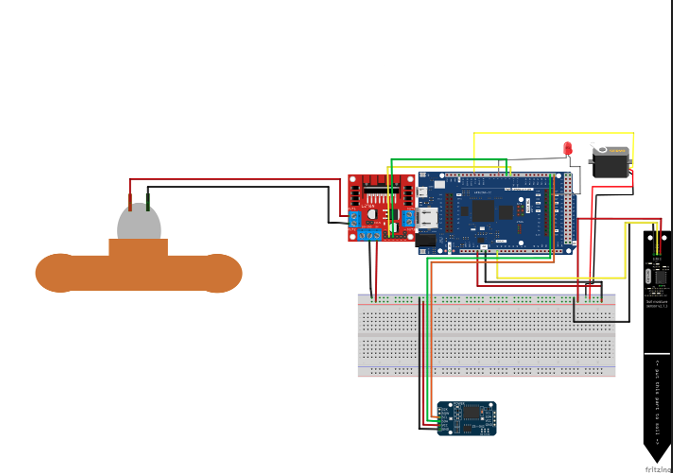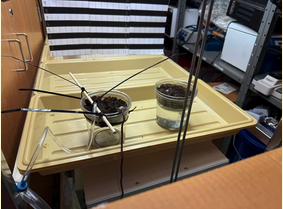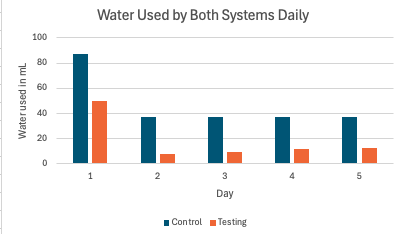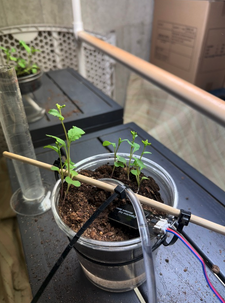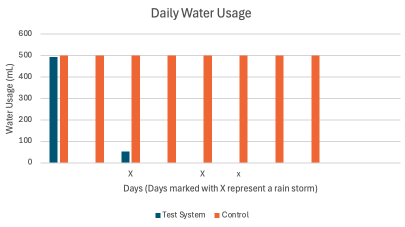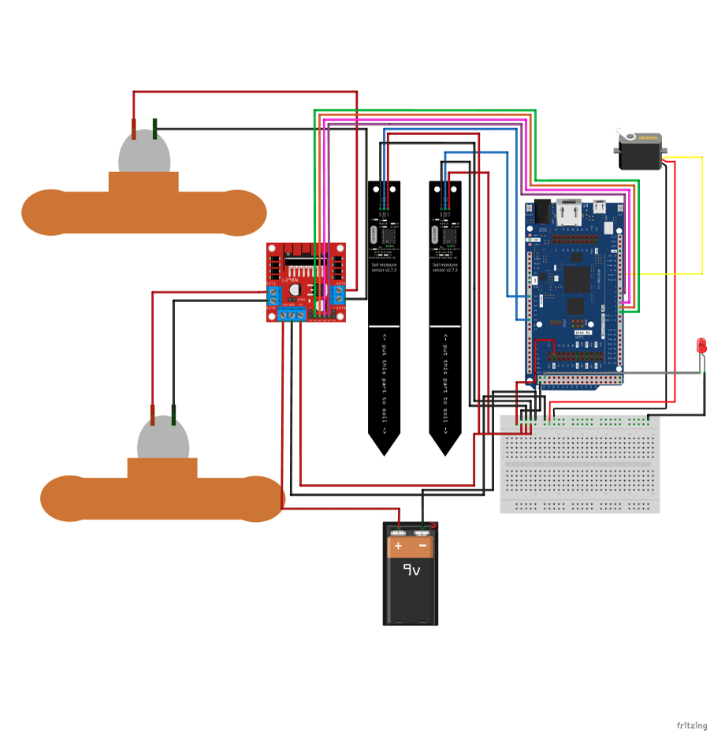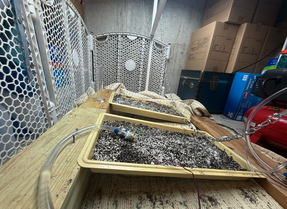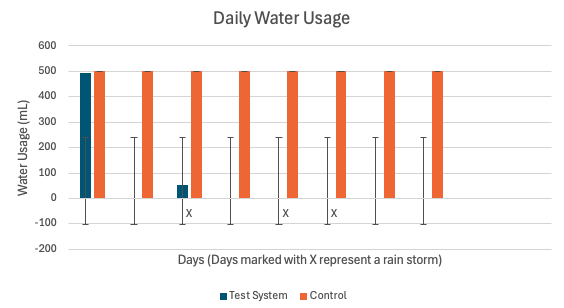Iteration 1
The focus of iteration 1 was to confirm that soil-based automatic irrigation was effective at reducing water usage. This system had one solenoid valve that opened and closed depending on the soil moisture. It would log the soil moisture as well as the time the valve spent open every day. A pump had to be utilized as gravity alone did not provide enough pressure for the solenoid valve to open. Below are wiring diagrams and pictures of iteration 1.
